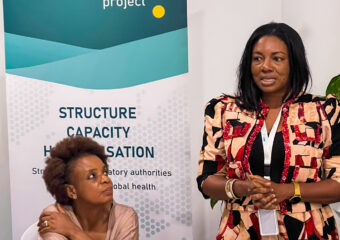Intensive Care Unit Strengthens Lassa Fever Response in Nigeria
Irrua Specialist Teaching Hospital and Bernhard Nocht Institute are enhancing Nigeria’s medical infrastructure to manage viral hemorrhagic fever with a new intensive care unit, focusing on Lassa fever.

To address morbidity and mortality associated with Lassa fever, Irrua Specialist Teaching Hospital (ISTH) and Bernhard Nocht Institute for Tropical Medicine (BNITM) launched the MEVIN project in 2023, which is part of the Global Health Protection Programme (GHPP). The BNITM has enhanced its support to Nigeria in addressing the current Lassa fever outbreak. This region experiences notable seasonal epidemic peaks during the dry season, with a mortality rate exceeding 15% for laboratory-confirmed cases that receive treatment in medical facilities. Lassa fever is a viral hemorrhagic fever (VHF), which describes a complex clinical syndrome affecting multiple organs where fluid exits dysfunctional blood vessels and accumulates, for example, around the lungs limiting respiration. In addition, patients suffer from kidney and liver failure.
To improve the management of such patients BNITM supports ISTH by sending clinical and laboratory teams. They focus on research, treatment, genomic surveillance and on implementing the MEVIN project. In addition, a point-of-care laboratory has been set up for the immediate diagnosis, including blood gas analysis as well as tests for cardiac and hyperinflammatory markers. The laboratory also serves for bacterial culture and pathogen detection, facilitating precise antibiotic therapy and to combat antimicrobial resistance.
Progress of new the ICU project
The MEVIN project aims to improve survival chances for VHF patients by setting up an Intensive Care Unit (ICU) within ISTH’s isolation ward equipped with the necessary medical facilities and staff trained in high-dependency care. The project focuses on expanding and improving the current capabilities of the isolation unit. Modern medical equipment was purchased to ensure constant monitoring of critically ill patients. This includes intensive care beds, patient monitoring systems, a central station for continuous observation, and devices like perfusors and infusomats for accurate medication administration.
A further aim of the initiative is to enhance medical capacity through a training program for medical staff, improving patient care and to develop and implement clinical guidelines. This includes extensive training sessions with hands-on workshops and theoretical instruction for nurses and doctors to gain crucial skills for daily operations. Finally, it addresses an efficient use of new equipment and patient monitoring to improve healthcare delivery.

Preliminary consultations with the Nigerian team serve to improve patient outcomes by establishing critical care guidelines and leveraging scientific advancements. These discussions strive to formulate a holistic strategy for the ICU. Also, it is meant to not only ameliorate the infrastructural and technological capabilities of the ICU but also to incorporate a rigorous training regimen for healthcare professionals.
Outlook
Future plans include advanced training through rotations in tertiary hospitals for Nigerian health personnel and further intensive medical training units. Once operational, the ICU is expected to make ISTH a supra-regional reference center for viral hemorrhagic fevers and improve the treatment of severe and life-threatening cases in compliance with international biosafety standards.
ISTH and BNITM remain committed to global health security and epidemic preparedness, fighting infectious diseases through international capacity development and aiming to contain and treat VHFs in Nigeria and beyond.




